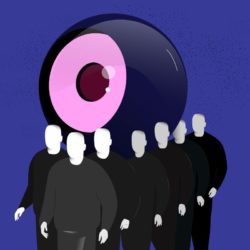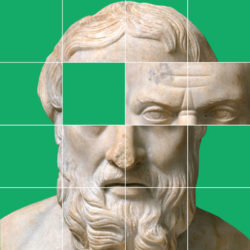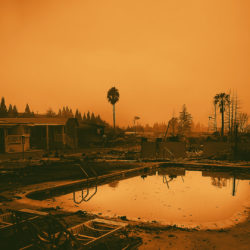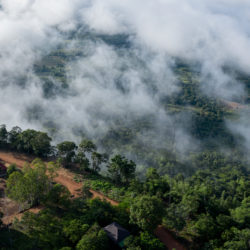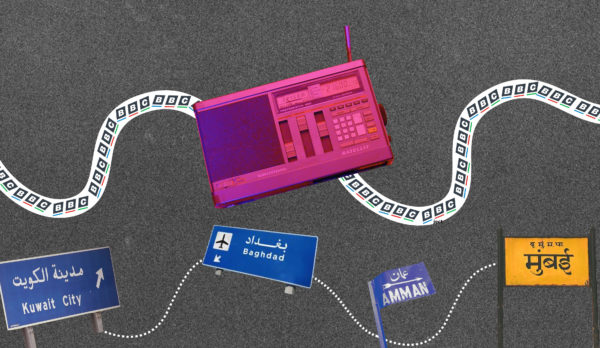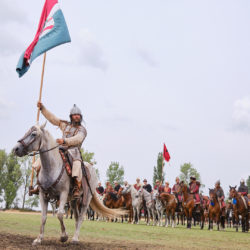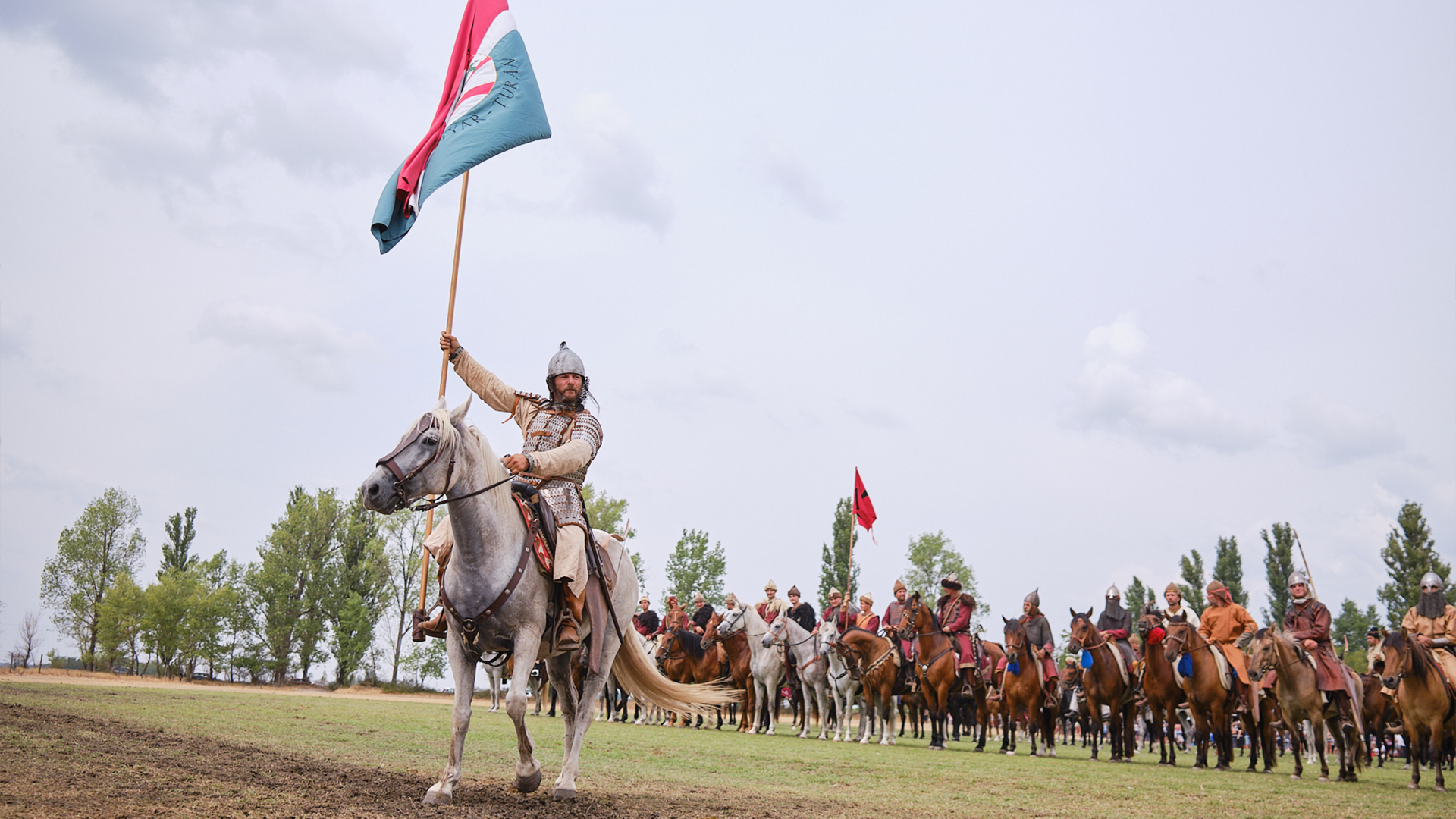
In Hungary, it’s Central Asia to the rescue
- By Katia Patin
- Photography by Andras Zoltai
- feature
Only if you’re lucky, will you catch a glimpse of him. He swoops in and then disappears, now giving his blessing to newlyweds at a sunrise shaman wedding, next whispering in the ear of Hungarian Prime Minister Viktor Orban’s loyal allies. Moments later, he reappears on horseback, trotting by in a procession of horsemen in medieval garb — Hungarian flag in hand, his long black hair tied in a low ponytail, — to greet high profile guests from Turkey, Azerbaijan and Central Asia.
The Big Idea: Age of nostalgia
Infatuation with a mythologized history has overtaken communities, cultures, entire regions, sending society and identity into a fun-house mirror of nostalgic reflections. This special issue brings you stories of people finding solace in pasts imagined and grieving for futures foreclosed in a time of existential threats.
Nostalgia has both been harnessed for political ends and become its own political force, electrifying powerful currents of populism, jingoism, and longing for dynastic rule. It also reaches deep into the crevices of human feeling — in kitchen table conversations and on TikTok alike — leading to a thickening of anger, loss, and sadness.
Andras Biro is the master of ceremonies for a biennial gathering, in Hungary, of 27 Turkic-speaking tribes called Kurultaj. It is where the right-wing government is promoting a policy of redefining itself as part of the Eastern world. Wrapped in a heavily embroidered silk robe, Biro is the leading ideologue of Hungary’s spin on ethno-nationalism: it asserts that the nation’s true roots are not in a Christian Europe but with Turkey and among the Turkic-speaking people of Central Asia, the descendants of the Huns.
Once banned under communism and pushed to the margins of the far right, this alternative history — known as Turanism — is being revived by the Hungarian government at the highest levels. Some of the central claims of Turanism have already made their way into Hungary’s national school curriculum, presenting an alternative Hungarian origin story. For Orban, Turanism has provided a convenient ideological basis for turning away from the EU and promoting closer ties with authoritarian regimes in Central Asia and with Turkey. In November, he said that “Hungarians are the only Eastern people left in Europe.”
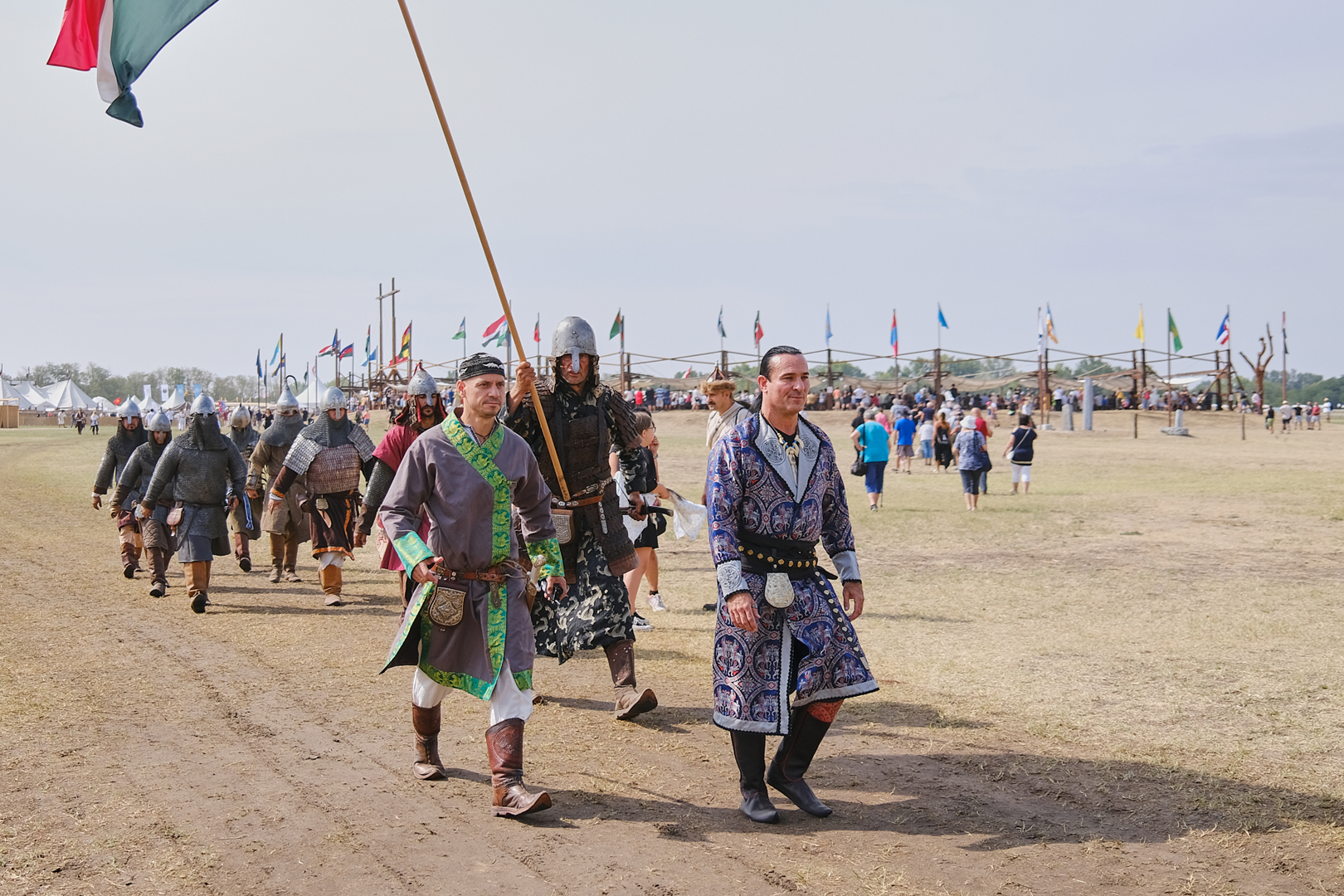
The Kurultaj gathering is a mecca for this anti-establishment movement. The festival is financed by the government and designed for a family-friendly weekend. Kurultaj draws pilgrims from across the political spectrum to a scorching semi-desert in Hungary’s south. Right-wing historians, LARPers, horse-lovers, uniformed members of the banned Hungarian Guard, eco-activists, committed neo-Nazis, yogis and families from the suburbs mill around a vast, dusty field with hundreds of delegates from Central Asia, Turkey and the Caucasus.
The centerpiece is an irrigated, verdant pitch where skilled riders re-enact Byzantine battles and compete in ethnosport. An actor playing Attila the Hun makes regular dashes across the field on horseback to cheers from the crowd in between speeches from a range of special guests — among them youngest son of Turkey’s President Recep Tayyip Erdogan, along with the former prime minister of Turkey, speaker of Hungary’s parliament Laszlo Kover and the president of the Organization of Turkic States. The sounds from the field are a constant echo across the festival grounds: heavy metal and Brahms’ Hungarian Dance No. 5, the boom of speakers’ voices intoning the moral corruption of the West and its “woke” culture and the ever-present percussion of horse hooves.
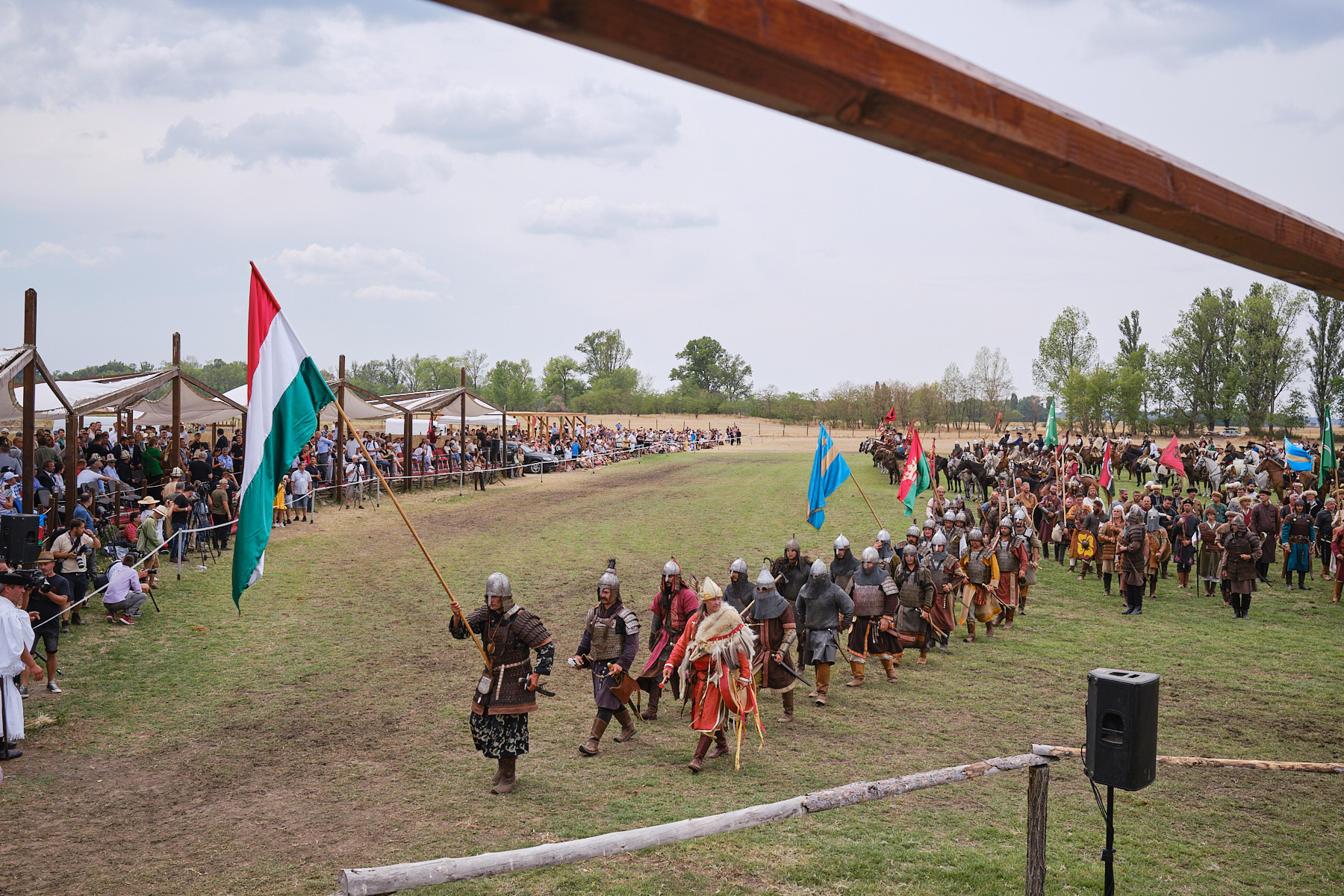

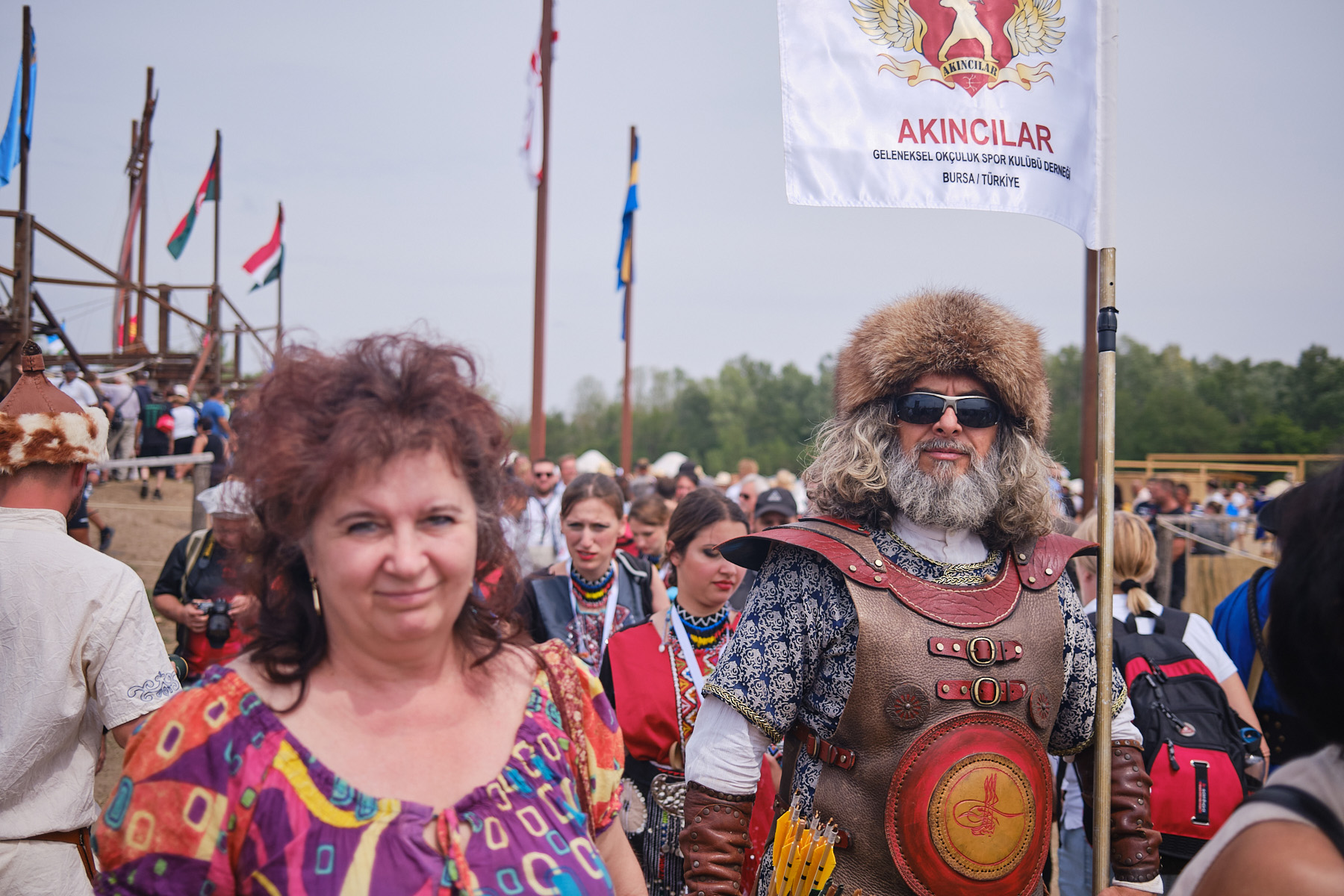

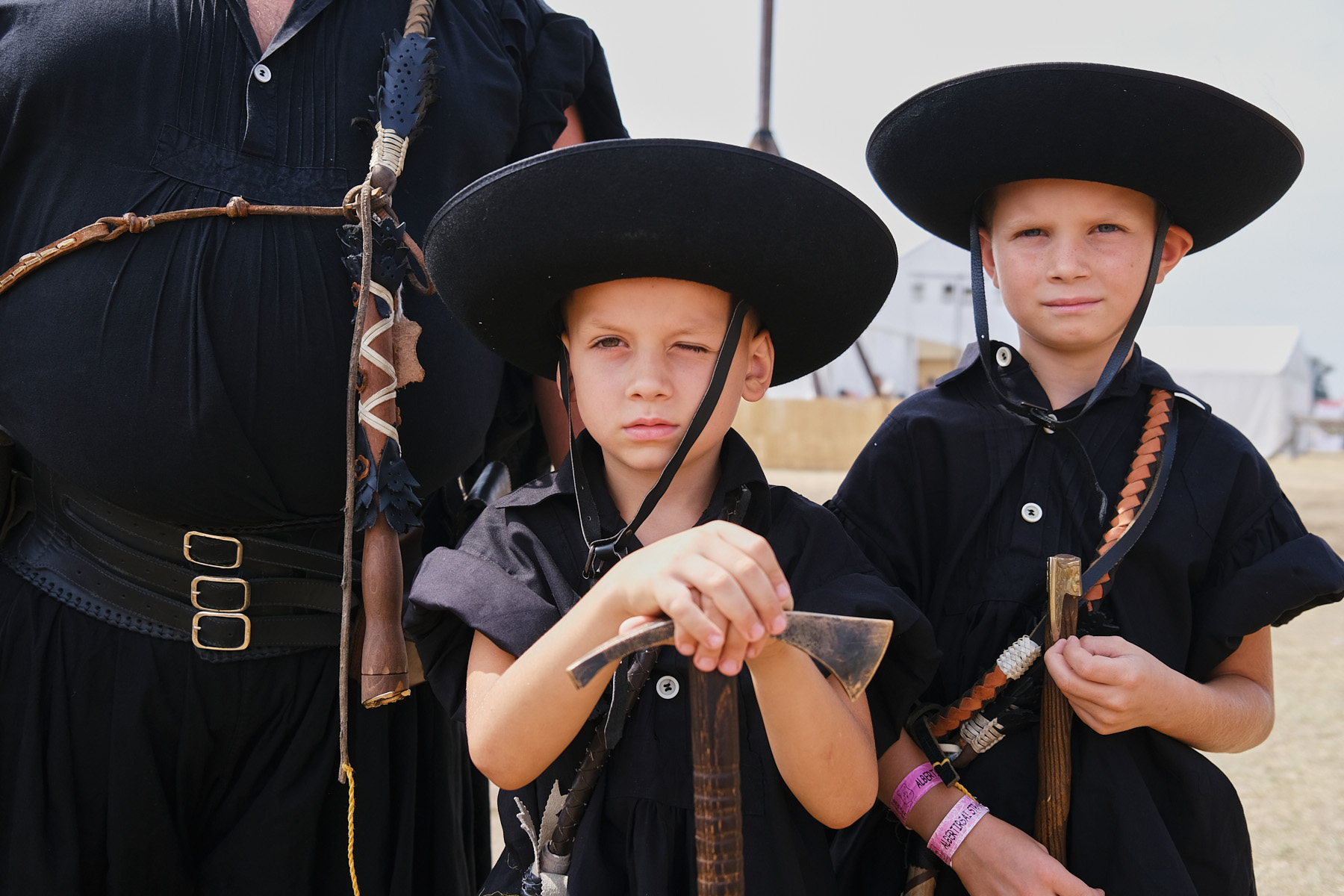
Largely dismissed by Hungary’s liberal elite, Turanism proponents — like Biro — have reinvigorated an ideology that was popular nearly 100 years ago. The idea first appeared in Hungary in the late 19th century, during a time of political collapse, when a circle of Budapest intellectuals began to question Hungary’s fixation with catching up with the West.
Historian Balazs Ablonczy traces the emergence of the word “Turan” in Hungarian to the 1800s, to describe the territory that is divided between modern-day Iran and Central Asian states. Turanism reemerged during the 2008 economic crisis from the margins of Hungary’s ultra-right wing. Over the last decade, Turanism has evolved into an amalgam of ideas bringing together disparate and at times contradictory beliefs.
In their weaponization of nostalgia, Orban and his political party Fidesz have shown just how well they understand what is often lost on Hungary’s, and Europe’s, left wing: the power of a good story.
“The left wing has left history to Fidesz,” said Adam Kolozsi, a Budapest-based journalist who has been attending Kurultaj for years. Since the first gathering in 2008, event organizers — who refer to themselves as “tradition keepers” — have been fusing together right-wing politics with history, entertainment and horses.
Turanic messaging expresses a yearning for a lost national greatness and a connection to a much larger role in the world, which a pan-Turkic identity offers. “Even if we’re small at the moment, we are a great nation,” one festival attendee, Mate Herzsenath, told me while drinking a beer. Herzsenath lives in Germany, where he says he can make more money, and was one of many Hungarians I met living outside of the country who returned home for Kurultaj.
“The entire 19th century was all about westernizing Hungary — inventing Hungarians as civilized, liberal, western, constitutional individuals,” said Gergely Romsics, a senior fellow at the Research Center for the Humanities at the Hungarian Academy of Sciences. Many proponents of Turanism view those efforts as criminally wrongheaded and consider the Hungarian defeat in World War I, which brought the loss of 75% of its territory, as proof.
Hungary is not alone in its turn east. Turanism is in step with a similar movement called Eurasianism in Russia, a pet project of Russian President Vladimir Putin, that argues that Russia is the heir apparent of the Mongol empire, destined to keep expanding its borders. In promoting kinship with the East and fostering a yearning for a greater past, both Putin and Orban stoke a popular mandate for embracing authoritarianism. The Huns, after all, didn’t conquer the world with democracy.
Since 2008, the crowds at Kurultaj have multiplied, and an entire academic and political apparatus has sprouted around the idea of a Turkic brotherhood.

Hungary's pride
The day before marching out onto the main pitch at the festival in his knee-high leather boots and sparkling silver and turquoise jewelry, Biro spoke before Hungary’s parliament, in a suit, about the importance of preserving traditions.
For the next three days in the sweltering mid-August heat, I chased the tails of Biro’s floor-length, blue-and-silver robes, hoping he could explain how he managed to bring 200,000 visitors (according to the official event count, though it appeared to be fewer than half this number to me) to a festival celebrating the genetic ties between white European Hungarians and Asian, Turkish and Middle Eastern nations. After all, this year’s Kurultaj festival followed remarks from Orban in which he asserted that Hungarians are not “a mixed race” and that countries where Europeans and non-Europeans mingle are “no longer nations.” It made no sense.
I caught sight of Biro as he prepared the seating arrangements in the VIP section along the main parade pitch. He adjusted the angle of chairs and name tags, giving out directions to an assistant. The biggest names this year were prominent speakers from Turkey and Central Asian countries. But many festival attendees seemed wary of the politicians. The men — all of the invited speakers were men — were easy to spot as they sweated through their crumpling business suits and moved through the festival grounds with entourages and security details.
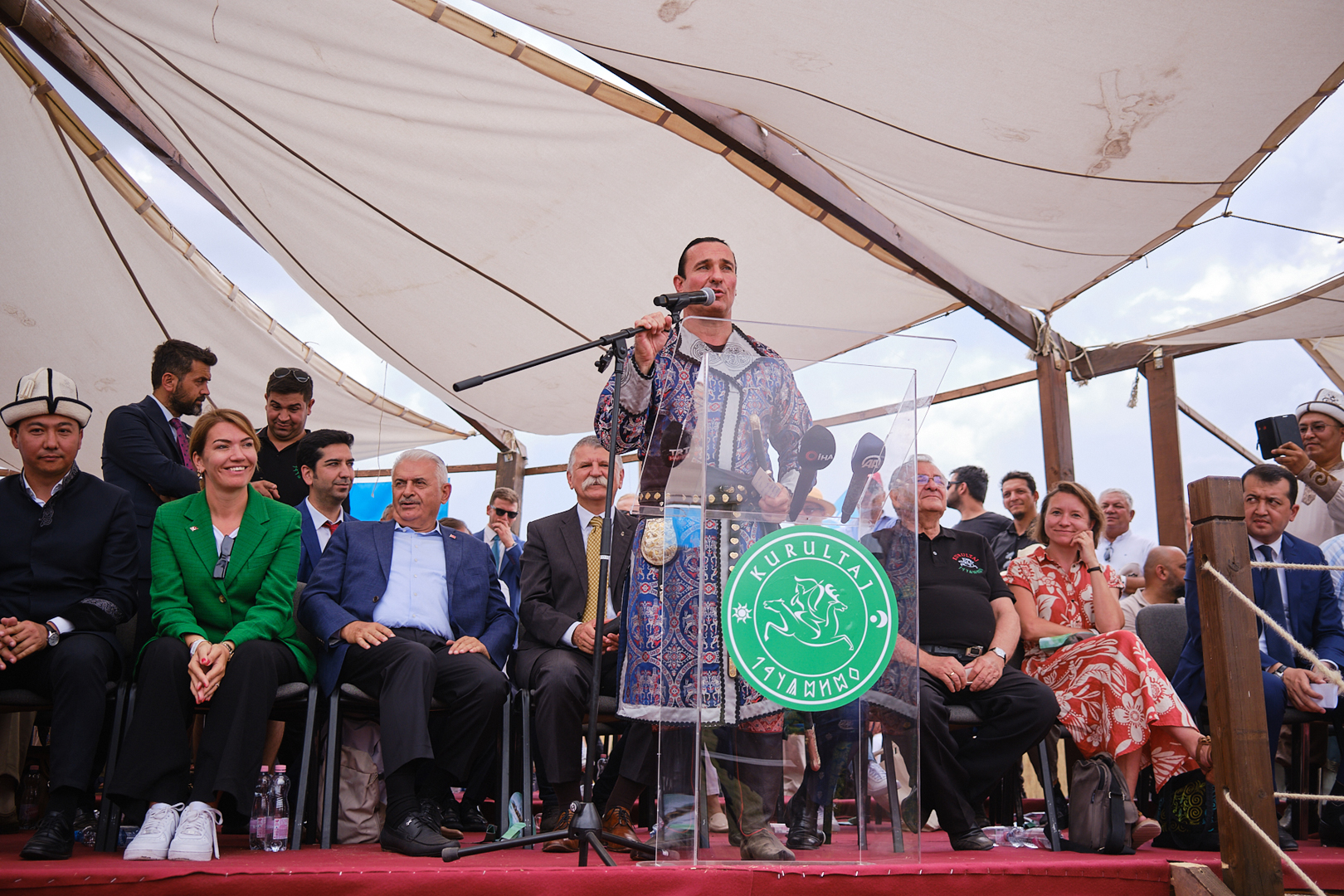
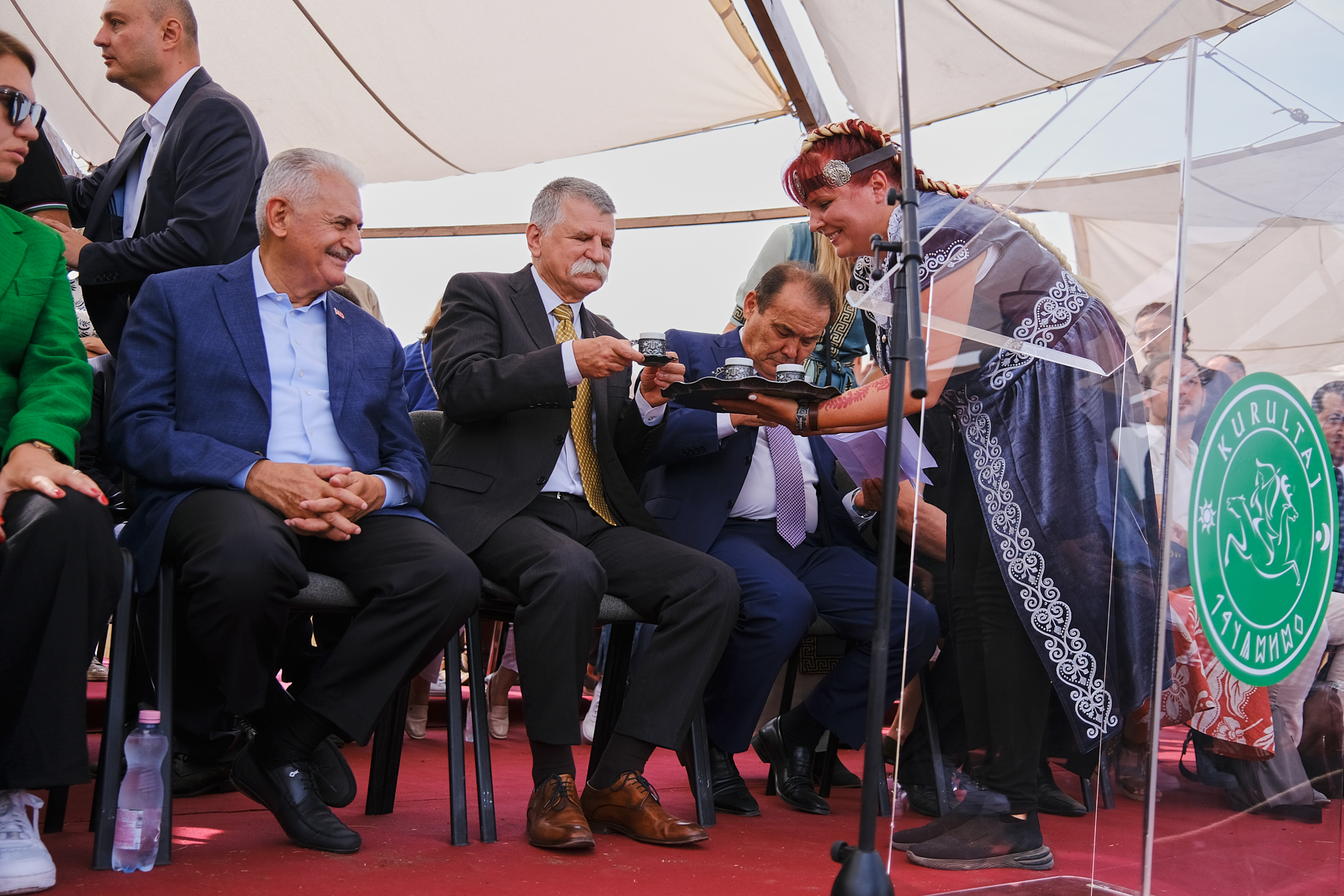
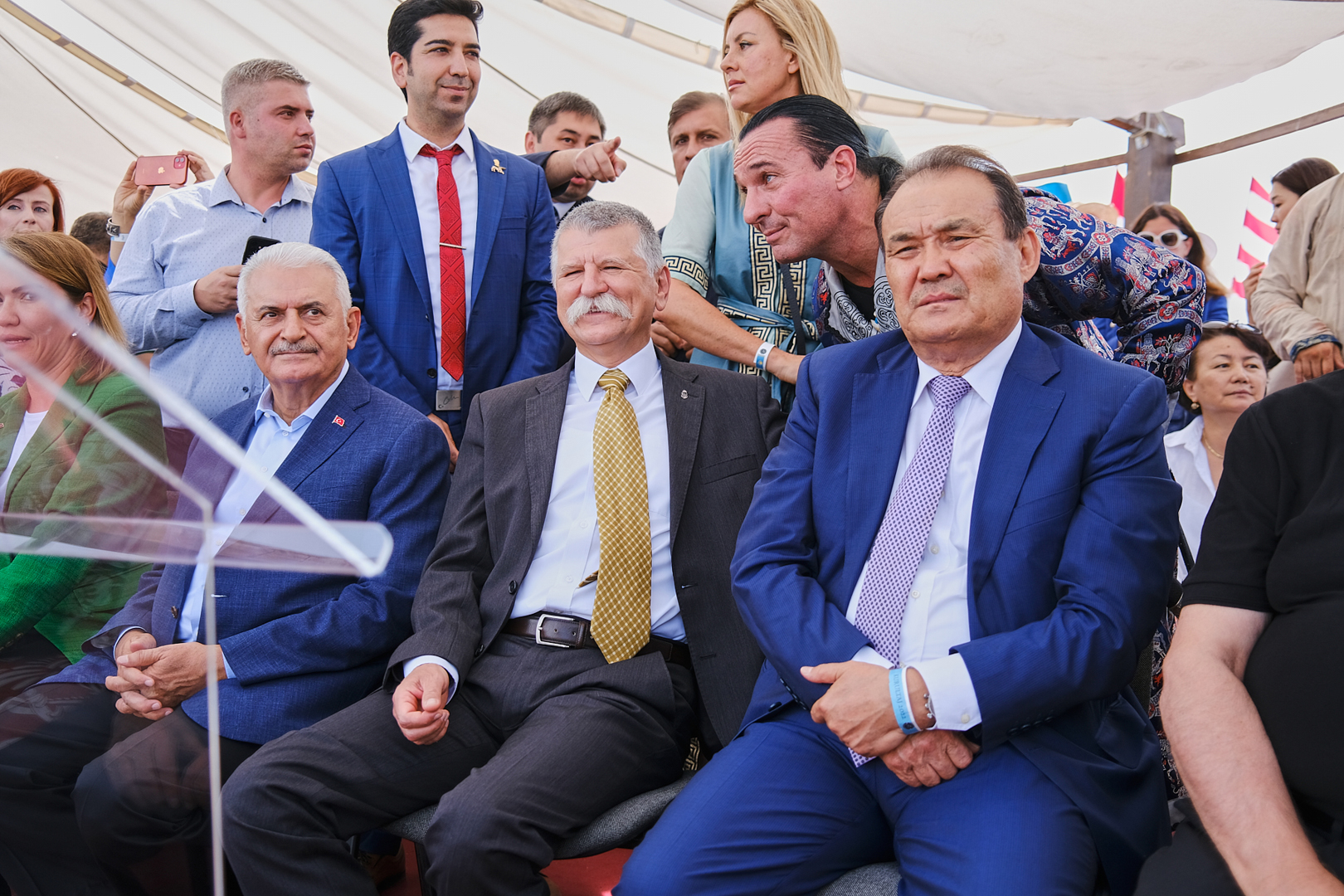

Many attendees, on the other hand, wore colorful native clothing from various continents. One couple I met had borrowed their elaborate costumes from the local theater where they worked. “It’s difficult to live in modernity,” Balazs Lengyel told me. “It’s gray and empty.” He and his wife Erika Lengyelne attend Kurultaj every year to be reborn at the gathering. Balazs seemed lost in thought as he spoke to me of his longing for a link to a shared past. Erika was more direct: “We are opposed to the EU. We have nothing to do with the West. It’s all a lie made up during communism. Fifty years of communism took away our pride.”
Katrin Kremmler has studied Kurultaj since 2014. She is now finishing her PhD on the subject at the Institute for European Ethnology at Humboldt University. Kremmler and I met up in Budapest where she had traveled from Berlin to attend the festival with a Hungarian friend. Before driving over to Kurultaj, she warned the friend to tear off a LGBTQ bumper sticker, worried about the car being vandalized while parked.
As a seasoned Kurultaj attendee, Kremmler had a few other pre-Kurultaj tips. I had asked her about fitting in at the festival, and she kindly sent over a couple addresses for Kurultaj lifestyle shopping in Budapest.
In one shop in central Budapest I found head-to-toe traditional Hungarian costumes for sale, along with the legendary Hungarian sudar: a bull whip up to eight feet in length. The end of the whip makes a sonic boom as it reaches the speed of sound. Hungarians claim that it’s the first human-made tool to cross the sound barrier, and it’s a staple at Kurultaj for both the professional horse riders and drunk attendees taking a crack.

There were also more modern clothing options: black t-shirts with a Christian cross stenciled next to “HETERÓ,” shirts with the slogan “Europe Belongs to Me” and multiple apparel options showing maps of “greater Hungary.” Orban has been spotted in a scarf that shows a map of Hungary with its imperial territories intact, which includes parts of modern-day Ukraine, Romania, Austria, Serbia and other countries. At another Turanism shop, this time on the Buda side of the city, I looked through a collection of anti-Covid lockdown buttons next to more anti-LGBTQ slogans and adverts for a children’s summer camp.
“Everyone finds something that they like and tunes out what they don’t identify with,” said Kremmler, trying to explain the mish-mashing of ideologies brought together by Kurultaj and Turanism. Her PhD focuses on the contradictions within the right wing’s anti-Muslim rhetoric and its embrace of Eurasia. She noted that Bugac, the village where the festival takes place, is about an hour’s drive from Hungary’s southern border with Serbia, a major corridor for migrants from the Middle East attempting to enter the EU. Men dressed in the all-black uniforms of the Hungarian Guard, a paramilitary group outlawed in 2009, patrolled the festival grounds.
Kremmler believes that for years Hungary’s liberal elite failed to understand Turanism. Today, the festival is able to attract top researchers from the Hungarian National Museum and other academic institutions. This is also the first year she’s managed to convince any of her Budapest friends or colleagues to join her at Kurultaj.
“It’s parallel realities,” said Kremmler. “Urban liberal elites think they can ignore these developments because they consider it pseudoscience. But it’s not fringe. It’s the new mainstream because the government is working hard to make this the new popular mainstream.”
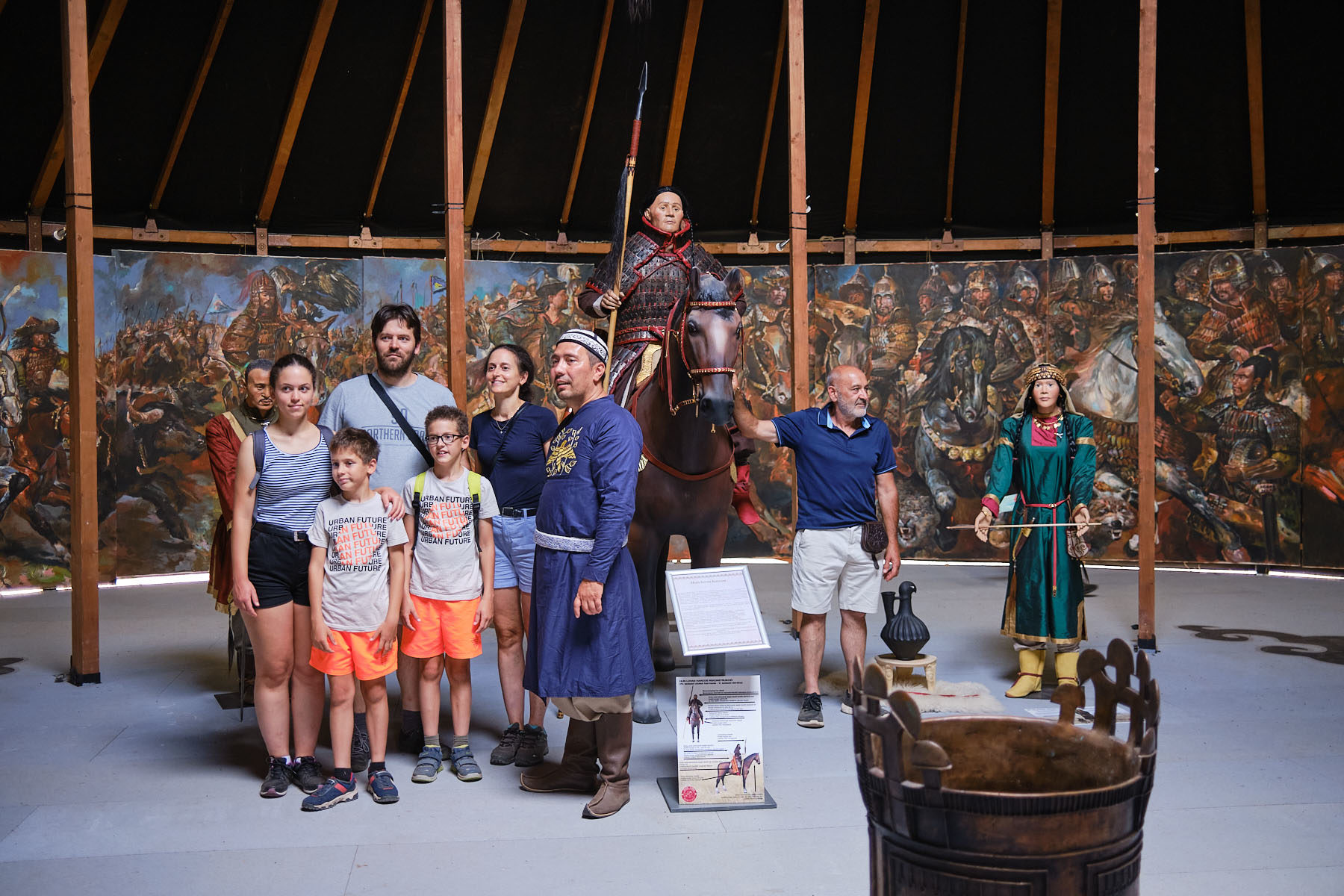
Some of the claims of the Turanism movement have now entered Hungary’s schools. Curriculum updates in 2020 included an intense focus on medieval history and introduced alternatives to Hungary’s accepted consensus on its national origins. Hungarians had learned that their language is most closely related to the languages spoken by the Finno-Ugric people found in Finland and Estonia and by indigenous tribes living in Russia.
When this was first discovered by scholars in the 18th century, it came as a bit of a shock. Surrounded by German, Slavic and Romanian speakers, some people found it “degrading,” said Gabor Egry, a senior research fellow at the Institute of Political History in Budapest. It also encouraged a sense of ethnic uniqueness.
The new school curriculum introduces the idea that the origin of the Hungarian language is up for debate and that Hungarians may in fact be closer relatives of the Turkic-speaking tribes originating in Kazakhstan.
Subscribe to our Authoritarian Tech newsletter
From biometrics to surveillance — when people in power abuse technology, the rest of us suffer. Written by Ellery Biddle.
Archaeogenetics, a field of research championed by Biro, is supercharging the argument that Hungarians came from Central Asia. Archaeogenetics relies on gathering a set of historic DNA samples — sometimes centuries old — that the researchers evaluate as representative of an entire population. The research requires expensive equipment that the government has helped to fund, to look at DNA samples from the 9th and 10th centuries. The field often faces criticism on how the results are interpreted.
“It fits this broader rewriting of history: a more nationalistic, more triumphalist narrative which must emphasize Hungarian victories and greatness,” Egry said. ”Emphasizing these Eastern origins could imply that Hungary belongs to this emerging world and not the declining one.”
The new history was played on repeat at Kurultaj.
“Everything they were teaching at school is not true,” said Malinda Kovacs, who described herself as a proud Hungarian, a mother and a homemaker, is captivated by Native American traditions and had a full-back tattoo showing the busts of several Native American men.
Hungary’s school curriculum changes also included replacing the works of writer Imre Kertsz — a Hungarian Jew who is the country’s only Nobel Prize winner in literature — with the assigned reading of Jozsef Nyiro, an admirer of Joseph Goebels, and Albert Wass, a convicted war criminal. Some teachers have protested online under the hashtag #noNAT, as part of a wider movement of ongoing teacher unrest in the country.
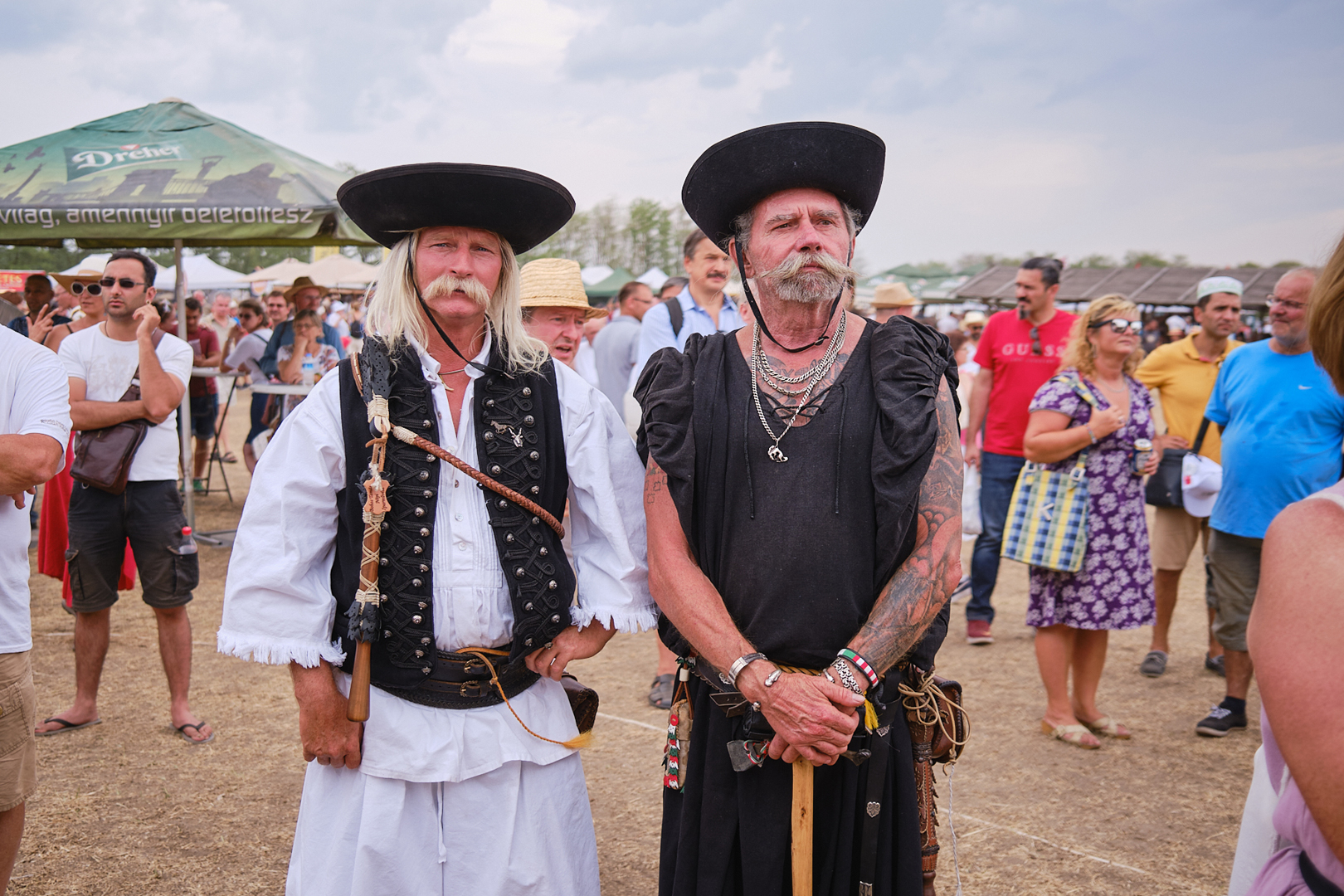
Memory warfare
Kremmler, the Berlin academic, has studied 21st-century Turanism and its leader, Andras Biro, who has a PhD and is affiliated with the Hungarian Museum of Natural Sciences.
"When Biro started his whole genetics project I guess this could have been contested if someone from the genetics field, in Hungary or internationally, had actually taken the time or energy to review his research,” she told me over lunch in Budapest. Instead, critics of his work came almost exclusively from among scholars in the humanities who didn’t engage with the genetic research he was touting.
“This is about a new construct of ethnicity that the government is producing,” Kremmler said.
Kremmler, whose mother is Hungarian, first came to Hungary in the 1990s to learn the language and join the academic community. She remembers it as an exciting time, a period of critical research burgeoning in the wake of communism. She’s now watching the pendulum swing the other way.
“It’s all really fascinating, unless it’s happening in your own country,” said Margit Feischmidt, laughing when we met at the Research Center for Social Sciences in Budapest, where she is the head of sociology and anthropology. I told her about some of my Kurultaj-themed shopping earlier that day. “It’s fascinating, and at the same time catastrophic,” said Feischmidt. Over three decades, she has watched an exodus of researchers from Hungary who leave out of an unwillingness to collaborate with the government.
When I finally caught up with Biro at Kurultaj, it was in the large yurt at the festival where the guest speakers convened for meetings. He has just finished a closed session with some of the guests from Turkey and Central Asia, among them President Erdogan’s youngest son.
“There has already been cooperation in the field of science or sport and now it’s on a political level,” Biro said, smiling with his white teeth flashing.
“From several thousands kilometers away, a Kazakh or an Uzbek comes over here and they do everything as we do, they understand everything: the common legends, the names, the ceremonies, the food,” Biro said. “Besides, legends don’t come from nowhere.”
The story you just read is a small piece of a complex and an ever-changing storyline that Coda covers relentlessly and with singular focus. But we can’t do it without your help. Show your support for journalism that stays on the story by becoming a member today. Coda Story is a 501(c)3 U.S. non-profit. Your contribution to Coda Story is tax deductible.
